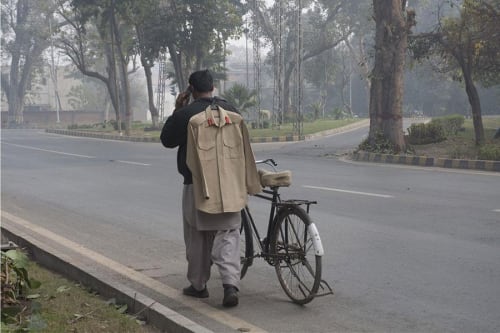The desire to have a voice – to claim agency – now seems as natural a need as eating or sleeping. Yet, it’s a relatively new concept: before the dissemination and enforcement of Western cultural ideas the world over – accelerated during the 19th century ‘age of imperialism’ – societies in what’s now known as the Global South largely prioritized familial and communal units over individual expression.
‘Can you hear my voice?’, a group exhibition at Melbourne’s Margaret Lawrence Gallery, curated by David Sequeira, takes its title from a 2019 video work by Kashmiri Indian artist Bushra Mir. Projected on a screen, Awaaz (Sound) isolates a clip from Vishal Bhardwaj’s film Haider (2014), set in mid-1990s Srinagar, against the backdrop of Kashmir’s Indian-imposed curfew and separatist insurgency. Speaking into a microphone looped around his neck, the protagonist asks: ‘Hello? Can you hear my voice?’
The disintegration of a unified voice permeates the rest of the exhibition, which explores the long-standing border conflicts between India, Kashmir and Pakistan. Curatorially, the perimeters of the works have likewise been redefined: packets from Gram Art Project’s Seed Calendar (2021) have fallen from their shelves; the Awaaz soundtrack has invaded Mubashir Niyaz’s video Redaction (2018); and Moonis Ahmad Shah’s installation We are here to fuck spiders (2021) has cast beams of light onto Huma Mulji’s Dry Cleaners (2016–21), a photographic series that creeps around every wall of the gallery. The display forces a consideration of borders not just as a geopolitical force but as an intellectual and social condition. Every day, sectarian conflicts in contested sites like Kashmir dictate who is given shrift in all facets of life.


